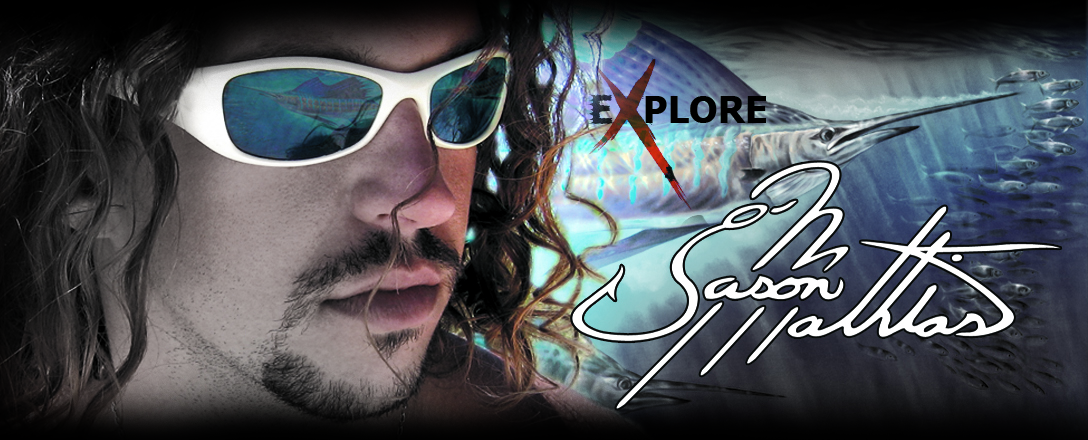
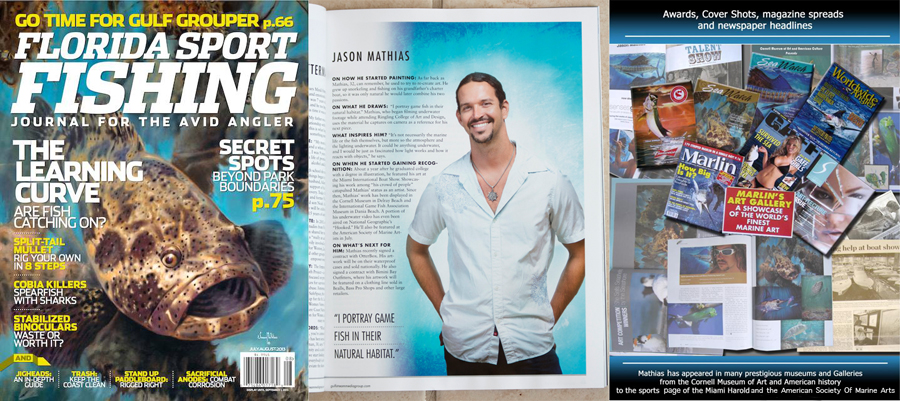
Above: Cover art for Florida Sport Fishing Magazine.
Jason Mathias is one of the top saltwater fish artists and has appeared in many magazine spreads, on the cover of Florida Sport-fishing Magazine, newspaper headlines and has been featured artist among many prestigious organizations such as the CCA, IGFA and ASMA. Mathias has also appeared in many prestigious museums and galleries from the Cornell Museum of Art and American History, the American Society Of Marline Arts and the Quinlan Visual Arts Center. Mathias has also worked with major retailers for national distribution such as OtterBox and Bass Pro shops.
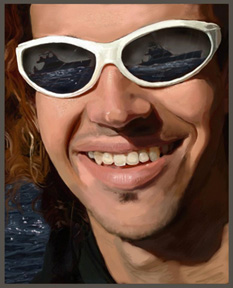
Above: Self Portrait 2005
Artist Bio: Native Floridian, Jason Mathias was born in 1981 in Stuart Florida where some of his earliest memories are of the ocean aboard his grandfather's charter boat "Do Stay." As a child, Jason's two favorite pastimes were drawing and fishing, it wasn't before long that he started combining the two. After graduating from Martin County high school as art student of the month, Jason was accepted into Ringling School of Art & Design where he majored in Illustration. He quickly became known to both fellow students and faculty as "the fish guy". While at Ringling, the artist began his practice of taking underwater footage to use as reference material for his growing portfolio of realistic marine life paintings. While still a student, he launched his career creating murals, commissioned artwork and freelanced illustrations for Mote Marine Laboratories - an experience that not only won him recognition for his unique talents as a marine life illustrator, but also focused him more fully than ever on his chosen path as a marine and wildlife artist. Within the first two years of graduating from Ringling school of art and design Jason was the premier featured artist at (IGFA) International Game Fish Association museum of hall of fame. Jason had also been featured artist numerous times and made several print signing appearances with (CCA) Coastal Conservation Association, and has been featured in many Galleries and museums such as the Cornell Museum. Jason's current fine art compositions in oils, acrylics and watercolors are drawn from the extensive experience and underwater digital video he takes while exploring the planet's oceans. You can now find Jason's works in stores, museums and galleries throughout the world including Europe, Egypt, Australia, Hawaii, South America, Canada and Central America.
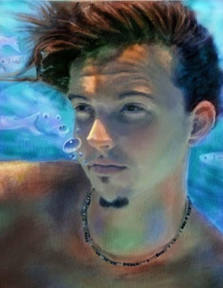
Above: Self portrait 2003
Artist Statement: I enjoy the challenge of painting a completely different world. I have spent countless hours studying and observing the fluid motion of water, and its reaction to light and surrounding objects. Understanding the essence of its form and the unique atmospheric perspective allows me to create the feeling of actually being immersed underwater. What makes an underwater environment so different from our own? In order to be able to paint water realistically you have to understand and dissect it from its very form. The waters unique atmospheric perspective reveals a proper setting for different moods in a painting. Atmospheric perspective is created by all the little particles in the water, mainly microscopic plants and animals. Light shining on these particles though the rippled surface creates moving light rays. Light rays can add great depth to a painting as it allows foreground, middle ground, and background even in empty space. When these light rays make it to the seafloor or on any other object in the water they create reflections from the surface. These light reflections bring out the object to its most raw color, creating warms and cools. When warms and cools are next to each other it gives the light the illusion to shimmer. Surface reflections also wrap around the object revealing its true form, this allows you to bring out more structure, form and dimension to an object emphasizing its anatomy. This will make the object seem more three dimensional and more lifelike. Just like the great masters, I also have to know the anatomy and proportions of my subject matter. First I study the anatomy of what fish I am going to portray. Then I begin to sculpt the fish out of paint starting with the skeletal structure, muscles, and then ending with a layer of skin. If you paint it the way it really is, it will look the way it really is. Only in recent times have we been able to go beneath the surface due to advancing technology. Therefore, underwater paintings have only been around for the past eighty years or so. This is why we don't see any underwater paintings from any of the past great master painters. It's a relatively new art form. Because of this reason it has yet to gain the respect from art critics it most rightfully deserves. When in reality it's more difficult because there's no master artist from the past to learn from, you have to experiment and discover certain things out for yourself. Not to mention it's more difficult and dangerous to get reference for your paintings. This body of artwork was inspired by what I experienced through my observations in nature. It's what drives my creativity and sparks my imagination. Throughout my life I hope to continue to pursue and excel in this career. It allows me to do what I love the most, experiencing and recreating the beauty of Mother Nature.
More articles about Jason Mathias at the links bellow-
http://www.bdoutdoors.com/article/bd-artist-spotlight-jason-mathias/
http://www.bdoutdoors.com/article/shark-encounter-jason-mathias/
http://theoutpostlife.com/pod_popup1584.html
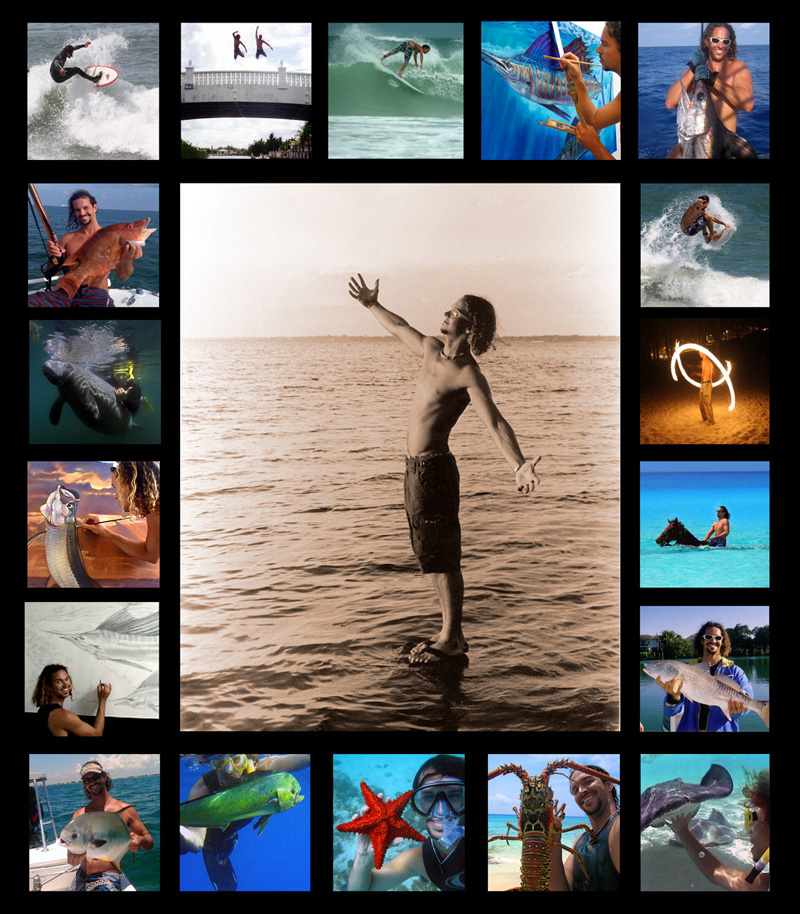
Above: About Jason Mathias.
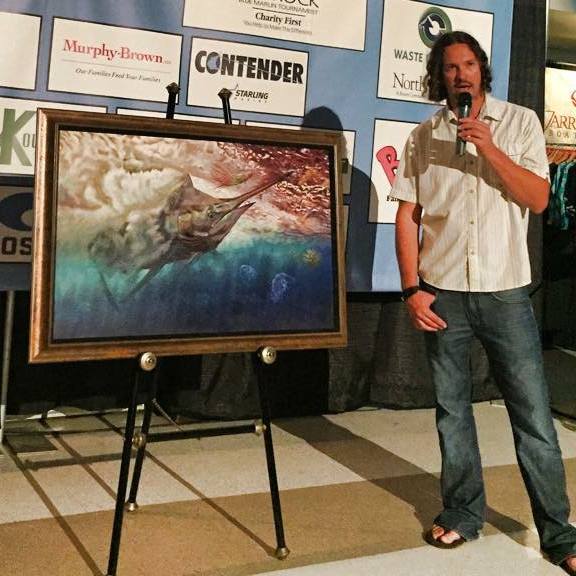
Above: Big speech at BigRock.
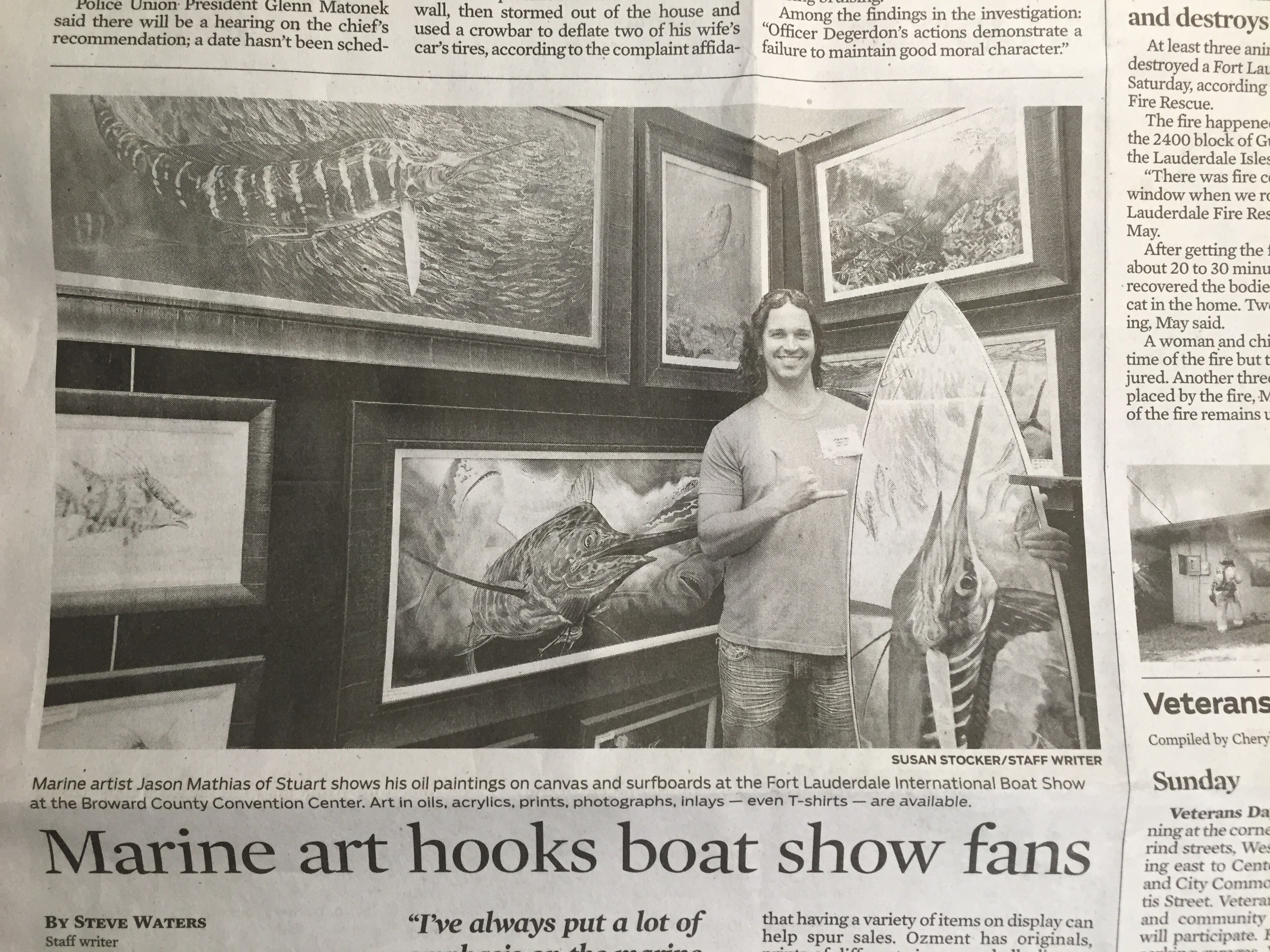
Above: Jason Mathias front page of Sun Sentinel.

Above: Jason Mathias's grandfather Capt Elly Brown, owner of the Do Stay, a 37' Merritt (hull #4) was a fishing legend and pioneer.

